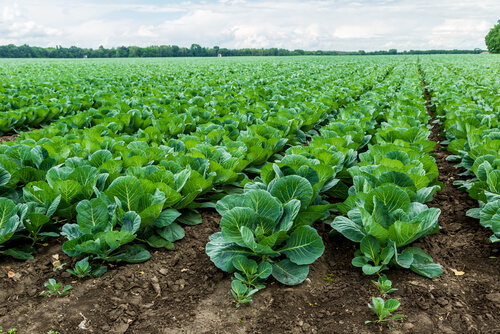
Cabbage is a leafy green vegetable. It is a biennial plant that is quite hardy. It is grown as a cool weather plant because it can tolerate frost, but cannot tolerate heat. The plant will grow a terminal bud of overlapping, broad leaves that are called ahead. These leaves grow on top of a stem that is short and stubby.
The heads may be flat, pointed, or round. The leaves of the cabbage plant may be wrinkled or smooth and come in different shades of green, purplish, or reds. There are different varieties of cabbage available, some of which harvest early during the season and others that are harvested during mid or late season.
If the cabbage plant is not properly cared for and is exposed to too much heat or is not watered enough it can bolt. This is where ahead does not form and the plant goes straight to seed. Here are some lessons for growing great cabbage each year.
1. Planting Regions
When it comes to growing cabbage there are some areas of the country where it is easier to grow this vegetable than others. You can grow cabbage in any area, but the regions that have a long and cooler growing season with temperatures that range from 45 degrees to 75 degrees F will have the best outcomes.
Cabbage plants do well in cooler weather and can even tolerate frost. For brief amounts of time cabbage can withstand temperatures that are as low as 20 degrees F. When temperatures reach over 80 degrees F cabbage is much more likely to bold and then go to seed.
For this reason, it is important to make sure that you keep your cabbage plants cool throughout the growing season. Providing them with shade during the hotter days can help to keep them from bolting and will ensure that you actually get heads to form so that you have cabbage to enjoy.